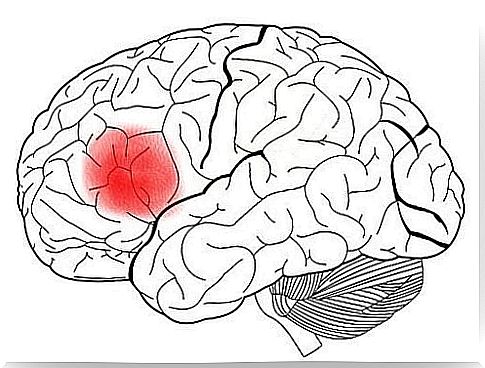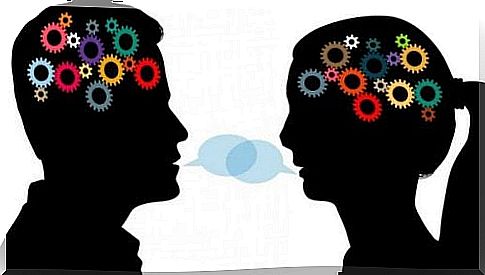Broca’s Area And Language Production

Broca ‘s area is the area of the brain that forms the biological basis of our language production. Language production is our ability to communicate using a symbolic system called language. This ability has helped us immensely in our evolution as a species.
The fact that we can communicate effectively has allowed us to work together and create complex societies. Society is also an important part of our survival in a very hostile world.
An important aspect of our neurological ability to produce languages is that it is one-sided. That is, most of the brain structures related to this ability are located in the left hemisphere.
However, some studies say that things like our ability to joke, think pragmatically, and be sarcastic are in the right hemisphere. Yet Broca’s area (or Broca’s speech center), which deals with language production, is located in the left hemisphere of the brain. More specifically, it is located in area 44, according to the Brodmann area theory.
In this article, we’ll tell you a little more about two basic elements that you need to be aware of in order to understand the role Broca’s area plays in language. The first has to do with its anatomical and functional aspects. The second has to do with Broca’s aphasia, which results from damage to the area.
The anatomy and functional aspects of Broca’s area
Over time, we have come to realize that Broca’s area is not the only area involved in language production. Along with brodmann area 44, areas 45, 47 and a large part of area 6 also play a major role. This is one of the reasons why it would be more appropriate to call it the center of Broca.

Broca’s center can also be further subdivided into two major structures: the triangular and the opercular structure. The triangular structure is in the anterior portion of Broca’s area and the opercular structure is in the posterior portion.
At an anatomical level, this system is closely associated with Wernicke’s area. Wernicke’s area plays a key role in how we understand language. These two areas (Wernicke and Broca) are connected by a group of neurons called the arcuate fasciculus.
These are the functions of Broca’s area:
- Verbal behavioral production, both speech and writing.
- Graphemes, phonemes and word management to structure grammar and morphology.
- Coordination of the speech organs to regulate pronunciation.
- Regulation of prosody, tone of voice and rhythm of speech.
These features are the pillars that support our language production. These features ensure that we can use language well enough to communicate. Hence, problems in Broca’s area can have serious consequences in the use of language and communication. In the next section, we will discuss the specific consequences of damage to this brain region.
Broca .’s aphasia
Broca’s aphasia is a language production disorder that develops when Broca’s area is damaged. Symptoms include slow, strained, and slurred speech. Although someone with this disorder has poor pronunciation, the message he wants to convey always remains logical.
This led to the conclusion that Broca’s aphasia is not associated with semantic problems.

For anyone with Broca’s aphasia, it is easier to say certain types of words than others. For example, it is more difficult to say functional words (one, the, some, above, of…) than words that actually have meaning.
The reason for this is that functional words only exist for the sake of a language’s grammar, and Broca’s area plays a role in that. Words with meaning, on the other hand, are semantically all right, making it easier to pronounce them.
Another important aspect of Broca’s aphasia is that the skills to understand a language remain intact. People with this condition have no problems reading or listening to someone talk. It is Wernicke’s area that deals with this neurological process.
This is another fact that gives us the confidence to say that Broca’s area is primarily for language production. Although it is connected to other areas, it seems that these areas can continue to function if Broca’s area is damaged.
One last note
Finally, we want to talk about a strange process that occurs when the language centers in your brain are damaged at a young age. Our brains are incredibly malleable. When your left hemisphere is damaged, it is possible that your language ability will develop in your right hemisphere.
In other words, if brain damage occurs before language is fully developed, it’s not the end of the world. Your brain shifts certain centers so that you can continue to develop normally, at least almost normally.









